Security Certificates: Difference between revisions
Jump to navigation
Jump to search
| Line 29: | Line 29: | ||
==Okay, Now I know why, but what do I do about it?== | ==Okay, Now I know why, but what do I do about it?== | ||
*If one extra click every time you use a Computerisms Service does not seem unreasonable, then one viable option is to do nothing | |||
*In some cases, the problem can be solved on the server. | *In some cases, the problem can be solved on the server. | ||
**If for example you wish to run an online store, you will need to purchase your own certificate | **If for example you wish to run an online store, you will need to purchase your own certificate | ||
| Line 36: | Line 37: | ||
*While Security Certificates are an open standard, implementation varies quite a bit depending on the browser and platform it runs on | *While Security Certificates are an open standard, implementation varies quite a bit depending on the browser and platform it runs on | ||
**If you use Internet Explorer, you can [[#Internet Explorer - Importing Certificate Authority|import the CA]] to establish trust and [[#Internet Explorer - Extra Tips|disable Name Matching]] | **If you use Internet Explorer, you can [[#Internet Explorer - Importing Certificate Authority|import the CA]] to establish trust and [[#Internet Explorer - Extra Tips|disable Name Matching]] | ||
==Internet Explorer - Importing Certificate Authority== | ==Internet Explorer - Importing Certificate Authority== | ||
Revision as of 19:05, 2 August 2012
What are Security Certificates and what are they used for?
- Security Certificates are a method of establishing trust and encrypting communication between different entities on a network
- An entity can be a person or a computer
- Certificates are issued to each entity, much like an identification card might be issued to each member of an organization
- Each Certificate must be signed by a Certificate Authority, often referred to as the CA
- Every certificate signed by the CA will trust every other certificate that is also signed by the same CA
- When two certificates trust each other, they can be used to encrypt a connection
- This is especially important when transmitting a username and password across the internet
- Each service provided by Computerisms will use Security Certificates to encrypt network connections
- Sites you visit that have https:// in the address bar are secured by a certificate
So why do I get a Security Certificate Warning?
- Certificate warnings can be caused by several factors, but the most important thing to know is that just because you see a warning does not mean the site is not secured
- One possible reason for the Certificate Warning is that your computer does not know the origin of the certificate on the server
- When you go to an https enable site that does not show the warning, it is because a purchased certificate on the server and a certificate on your computer have been signed by the same CA
- When one generates his own Certificates instead of purchasing them, as Computerisms does, they are considered Self-Signed.
- Since Computerisms doesn't pay the fees to have its certificates signed by the same CA used by your computer, your computer will not trust the server's certificate
- A person with the right knowledge can set up a system that is just as secure at a fraction of a fraction of the cost of purchasing certificates
- Using paid Certificates on a Hosting Server that is hosting many domains is prohibitively expensive
- Since your computer cannot verify the origin of the certificate on the server, it cannot establish a trust relationship with the server
- The warning will inform you that the certificate on the server cannot be trusted because its origins cannot be confirmed
- Since you know the origins of the certificate (It comes from Computerisms), you can override your computer's paranoia
- By temporarily overriding the warning, you instruct your computer to trust the certificate on the server
- Once the trust is established, then the certificates can be used to encrypt the communication so your password is not transmitted in clear text
- Another reason a security certificate warning might pop up is a mismatched address
- Computerisms Webmail is one site that answers to many names, such as https://webmail.domain.tld
- If you arrive at the site by a name that is different than the one on the certificate, your computer will warn you that the address in your address bar is not the same as the address on the certificate.
- Remember, regardless of the warning, when you instruct your computer to trust the certificate, encryption will still happen. So long as you know the certificate, even if your computer doesn't, it is safe to send your passwords over the internet. You should not send a password on an unencrypted connection.
Okay, Now I know why, but what do I do about it?
- If one extra click every time you use a Computerisms Service does not seem unreasonable, then one viable option is to do nothing
- In some cases, the problem can be solved on the server.
- If for example you wish to run an online store, you will need to purchase your own certificate
- In the case of Computerisms Services, purchasing certificates is very cost prohibitive
- As a hosting provider, Computerisms is not the only company facing this problem
- it is better to have a certificate and a warning than it is to have no certificate at all
- While Security Certificates are an open standard, implementation varies quite a bit depending on the browser and platform it runs on
- If you use Internet Explorer, you can import the CA to establish trust and disable Name Matching
Internet Explorer - Importing Certificate Authority
|
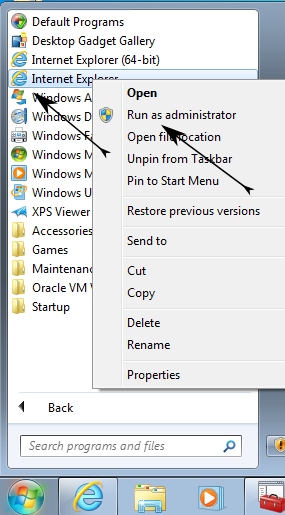 |
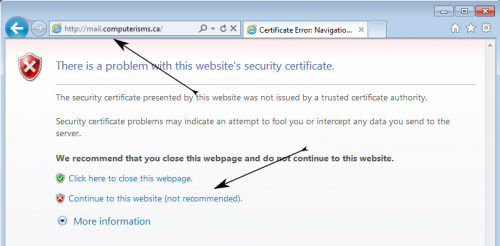 |
|
|
 |
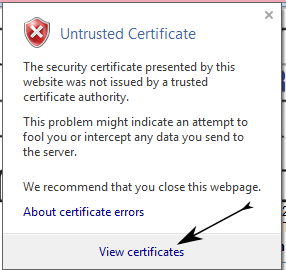 |
|
|
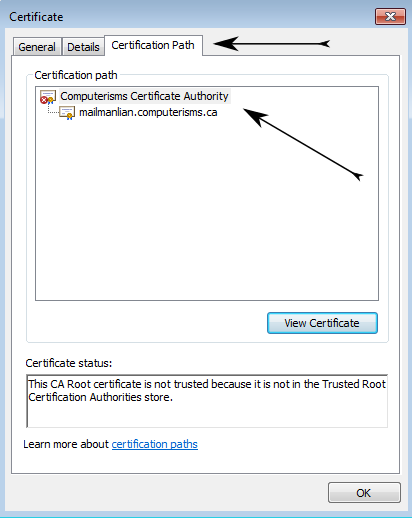 |
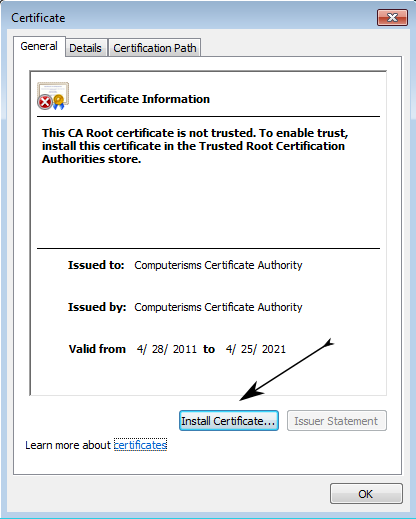 |
|
|
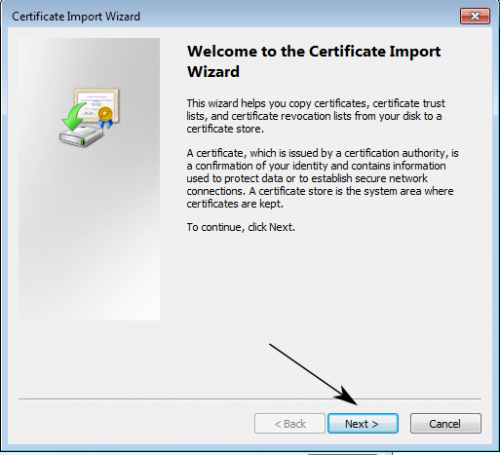 |
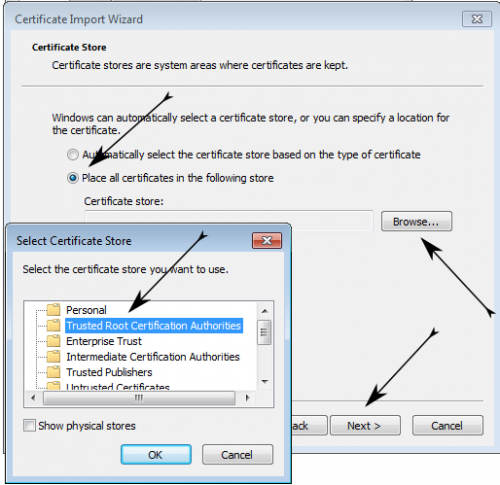 |
|
|
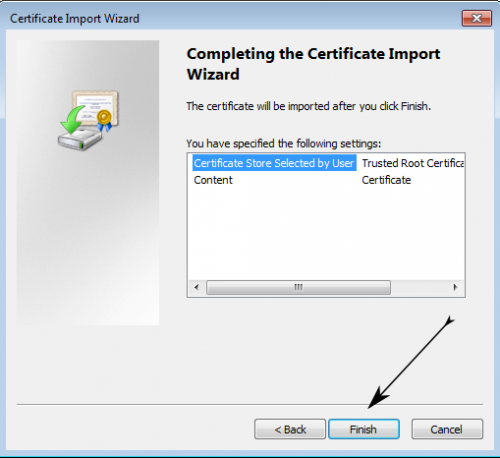 |
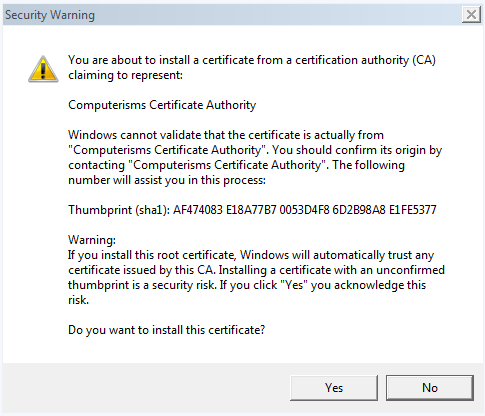 |
|
|
 |